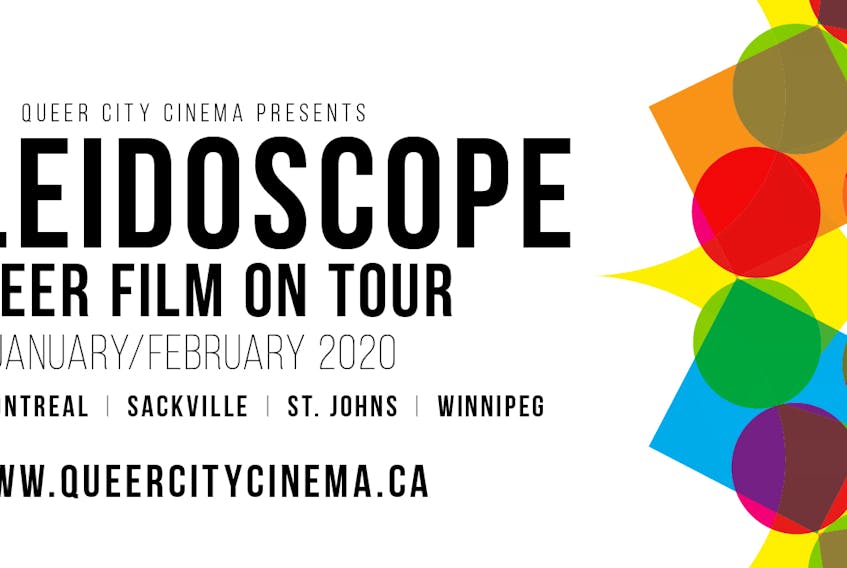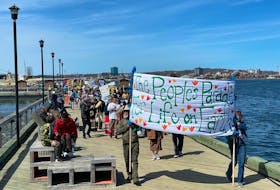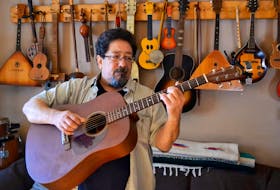ST. JOHN'S, N.L. — Queer City Cinema’s “Qaleidoscope” stopped into St. John’s in February, marking the first time since 2011 the tour has made its way to the province.
Created to provide a platform to showcase works by Canada’s queer filmmakers, “Qaleidoscope” features 23 unique films from QTBIPOC people – queer, trans, black, Indigenous and people of colour.
The diverse lineup drew film enthusiasts to Eastern Edge last Friday, with two dozen people braving the freezing rain that had already cancelled many events around the capital city.
Perhaps this is a testament to Queer City Cinema’s nearly 25-year-long dedication to highlighting contributions of QTBIPOC filmmakers — regardless of the circumstances, barriers or obstacles, the show will go on, like those who created it.

Executive and artistic director Gary Varro welcomed the crowd, giving a brief history of Queer City Cinema’s “Qaleidoscope” and its country-wide travels before we settled in for a series of 12 shorts.
“Where We Were Not – Feeling Reserved, Alexus’ Story” by Jess MacCormack and Alexus Young was first, this animated documentary exploring police brutality towards Indigenous people.
Alexus tells a harrowing tale of being driven out of town by police officers, who took her shoes and jacket and left her to freeze to death. The filmmaker lived to tell the tale, refusing to stay silent.
Local filmmaker Kailey Bryan’s “Diapause” followed, a witty little short centred on houseflies trapped in between window panes.
In the silent film, Bryan muses over mankind’s power over their short lives, with a focus on “diapause” – the ability to suspend animation, and imagining if humans had the same ability. Is it like pressing pause? Or like being reborn?
Blair Fukumura’s “Bedding Andrew” reflected on life as a gay man with cerebral palsy and a wheelchair, with Diane Obomsawin’s “I Like Girls” inspiring laughter as four women recount their earliest experiences in understanding and expressing their sexuality as lesbians.
“Niagara” spliced scenic shots of the falls with a simple story and a history lesson about Ongniaahra, the Mohawk word for Niagara from the Haudenosaunee Nations.
A personal favourite was Rob Fatal’s “Fluids.” After a failed attempt at creating a sci-fi/fantasy porno years earlier, the filmmakers contemplate the binary belief system of failure/success, good/bad, right/wrong. Did they fail at making a film, when they still, in fact, made a film?
“Maybe it’s what it needed to be when it needed to be it,” the filmmaker says, an inquisitive comment that could apply to many facets of life.
Alli MacKay’s animated experimental “Flash Flood” united animators around the world and three main characters who divulge their unique perspectives on identity and gender. After a flash flood threatens to drown them, together, they surface as the water recedes.
Wrik Mead’s “Outcognito” layered images and sounds, creating a five-minute-long whirlwind delving into homophobia, fear, lust, acceptance and more.
Another personal and crowd favourite was Thirza Cuthand’s “2 Spirit Introductory Special $19.99*” — a kitschy ’90s-style infomercial advertising a phone support system for two-spirit people, offering knowledge, support and gifts such as a whisk with a beaded handle.
This piece inspired a lot of laughter, with people later commenting to the attending filmmaker that this could and maybe should be a real product/service.
James Diamond’s “Jizz Envy” used song to explore sexual experiences and true love, with ejaculation serving as a kind of benchmark for a successful sexual encounter. Short and sweet, this witty two-minute film inspired laughter.
Dorian Wood and Graham Kolbeins’ “Paisa” followed, an “immersive fever dream” touring the audience through a celebration of brown sexuality and sensuality, removing the policing of brown bodies. “Maybe they are right, maybe we are all doomed, but in moments like this, everything feels natural,” just as intimacy should.
Lyle Ashton Harris’s “Selections from the Ektachrome Archive 1988-1996” finished off the evening, a sombre yet hopeful trip down memory lane at the height of the AIDS crisis. More than 100 photographs illustrate the photographer’s private/personal and public/professional life.









